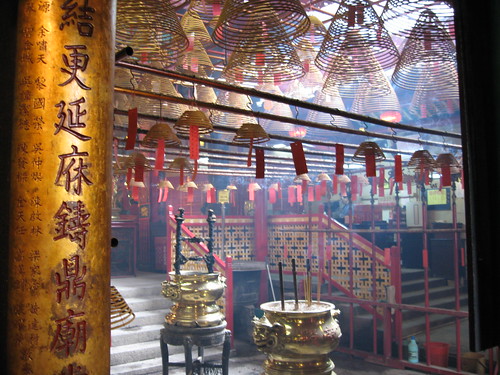Back to the Basics: Burning Incense
In the very beginning of my work as a perfumer, I made incense. Not the cheap kind of incense made of pre-made incense sticks dipped in synthetic oils. But rather, loose incense, made of a combination of resins, wood barks, spices and herbs. Traditionally, these are burnt over hot charcoals in many religious spaces such as temples and churches. There is something really magical about entering a space like this. The scent of burning incense is what you notice first of all. And it’s been burnt there for many years (in some cases, hundred over hundreds of years). The incense permeates the walls of such temples and churches, sinks into the stone or wood, not to mention the clothes and hair of the people in it. Everybody becomes connected through smoke.
The best incense I’ve ever made was a kyphi formulation. It was not my recipe, but I was still very pleased with it all the same. The process for making kyphi is longer than any other incense, as it uses raisins and honey as an agent to glue together the differerent fragrant components (i.e.: frankincense, myrrh, juniper berries, cinnamon and so on). The raisins need to soak for quite a while and the whole process is sensual and magically fragrant. Forming the incense pellets also takes quite a while, as well as drying them out (to let any excess moisture out). The fragrant is never “burnt” and always pleasant with kyphi.
But I digress… What I really wanted to talk about is how incense really was the first form of perfume. It’s already a well known fact that the word “perfume” originates in Latin: Per Fumum means “through smoke”. What is less talked about is how it all started. And I feel that somehow, even though we don’t have the exact evidence for this – the way incense (and than perfume) was discovered is so deeply rooted in our conciousness that it can be a truly powerful tool to reconnect with our deepest selves and reestablish our connection with past generation and with the earth – thus perhaps securing a brighter future for the future generations.
I imagine incense was discovered one day when a few homo-sapiens or even less advanced species of humans made a fire and discovered that a certain plant (perhaps it was an ancient coniferous plant?) made the fire go higher, brighter and stronger. They may have also noticed a very strong and pleasant odour released at the same time. Bit by bit, our apish forefathers have discovered more and more plants, woods, resins and herbs that made the fire start quicker (the essential oils are highly flammable – just think about all the turpentine in pine trees for instance!). They also noticed that they feel better when they smell these burning plants, and their spiritual leaders or shamans used these as medicine to treat both body and soul, and as means to communicate with spiritual beings (represented by the visible, thick incense smoke emanating from these plants when burnt).
The earliest mention of incense is in the Epic of Gilgamesh, a Sumerian tale of The Flood. The Sumerian civilization existed nearly 7,000 years ago. The Egyptians have perfected the art of incense, medicine and also fat based perfumes (maceration of fragrant plant matter in oil, as well as solid perfumes). The Egyptian civilization started about 5,000 years ago. These are very early moments in human history, and even than, fragrance was connected to many aspects of human life: spirituality, beauty and health. Incense was a constant presence in the domain of spiritual work and worship sites. Incense was a way to heal the sick (get rid of evil spirits to banish the physical illness). And it was a luxury commodity among the rich.
Incense and fragrance had many spiritual and healing roles in the Indian and Chinese culture (Ayurveda and Chinese medicine both used aromatics and aromatic herbs for their healing properties).
It wasn’t until very recently that perfume have become “just” a commodity and a luxury item, as if disconnected from the other benefits it provides for us for our spiritual and physical well-being. It is funny that just as quickly as we in the West forgot about it, we were also fast to receive it again in the form of aromatherapy – an art of healing that has grown so fast as to lose most of its meaning in the last couple of years. The term is so overused, and synthetic aromatics are often substituting the real, natural ones in many commercial products that claim to be “aromatherapeutic”. And so aromatherapy grew fast, and than it just collapsed – instead of to oblivion, to a far worse real, the realm of being misused, misunderstood, over used and also used in not so careful ways.
We must respect the power that natural essences posses. They need to be used properly and sparsely in order to be used effectively (especially for medicinal or therapeutic use). There are many ways to benefit from natural essences in an “aromatherpeutic” way. When it comes to balancing emotions and connecting with ourselves (or our higher selves, if we are so ambitious!), incense is one such way. And setting time to enjoy and appreciate incense and get back to the basics. Breathing.




0 Comments:
Post a Comment
<< Home